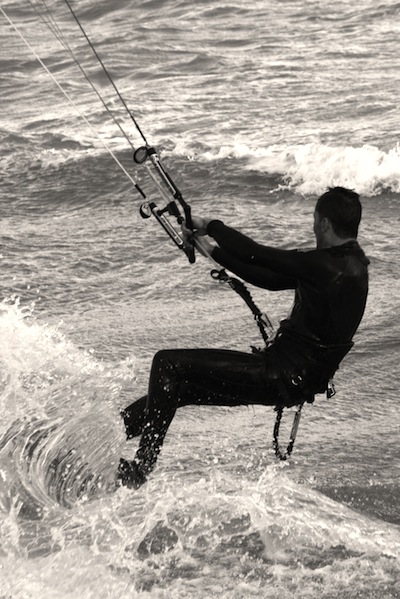 Adventure and high-risk sports is thrilling and exciting. It’s a sport that attracts adventure enthusiasts like Richard Branson and the Secretary of State, John Kerry.
Adventure and high-risk sports is thrilling and exciting. It’s a sport that attracts adventure enthusiasts like Richard Branson and the Secretary of State, John Kerry.
Doctors, presidents, CEO’s actors, and people who love the thrill of an adventure sport, kiteboarding offers “big air” as they fly above the water while maneuvering a giant wave.
It should be no surprise that there is an element of danger and injury in this sport; and although injury studies have not reached a scientific level, there are common injuries that have occurred.
Performing maneuvers while strapped-in to a kite and board takes a lot of skill and coordination. Technical mistakes, improper kite sizes (oversized kites), unable to detach from your harness, and underestimating wind conditions may lead into things like crashing onto rocks, boats or other surfers on the water.
Common areas to be injured are:
• The foot, ankle and the knee: Injuries in this region occur when the rider is thrown from the board or the board is twisted under the rider by the force of a landing or by a wave.
• The head: Most head injuries occurred in those not wearing a helmet and wearing a board-leash which resulted in the board being jerked back into the head.
• Neck injuries include whiplash to muscle strain.
• Back pain/strain often occurred from pumping up the kite but may extend to spinal fractures from shore landing.
• The chest/ trunk
• The upper extremity: Injuries here range from simple overuse, tennis elbow or epicondylosis to shoulder dislocations
Be prepared when hitting the waves of Puget Sound. Know your surroundings and use protective gear like a helmet, chest armor and a sturdy wet-suit. These items will help protect your upper body. Work on your landings when catching air and be smart about those tricky maneuvers that you are performing. Enjoying a high-risk adventure sport is great when you can anticipate different scenarios while in the air or on the water!
Dr. Philip R. Downer is an avid kiteboarder and his best tip for you is this, “To stay safe and have fun kiteboarding; take part in a good lesson, as it is crucial in avoiding injury. Only go out in conditions you are comfortable with and always with a buddy. While on land, keep the kite low, and go quickly with the water.”
If you believe you are suffering from a sports injury and need specialized orthopedic care, Orthopedic Specialists of Seattle has excellent treatment options available for you.
Find OSS on Facebook, Google+, and follow on Twitter to keep up to date on new articles and news.
